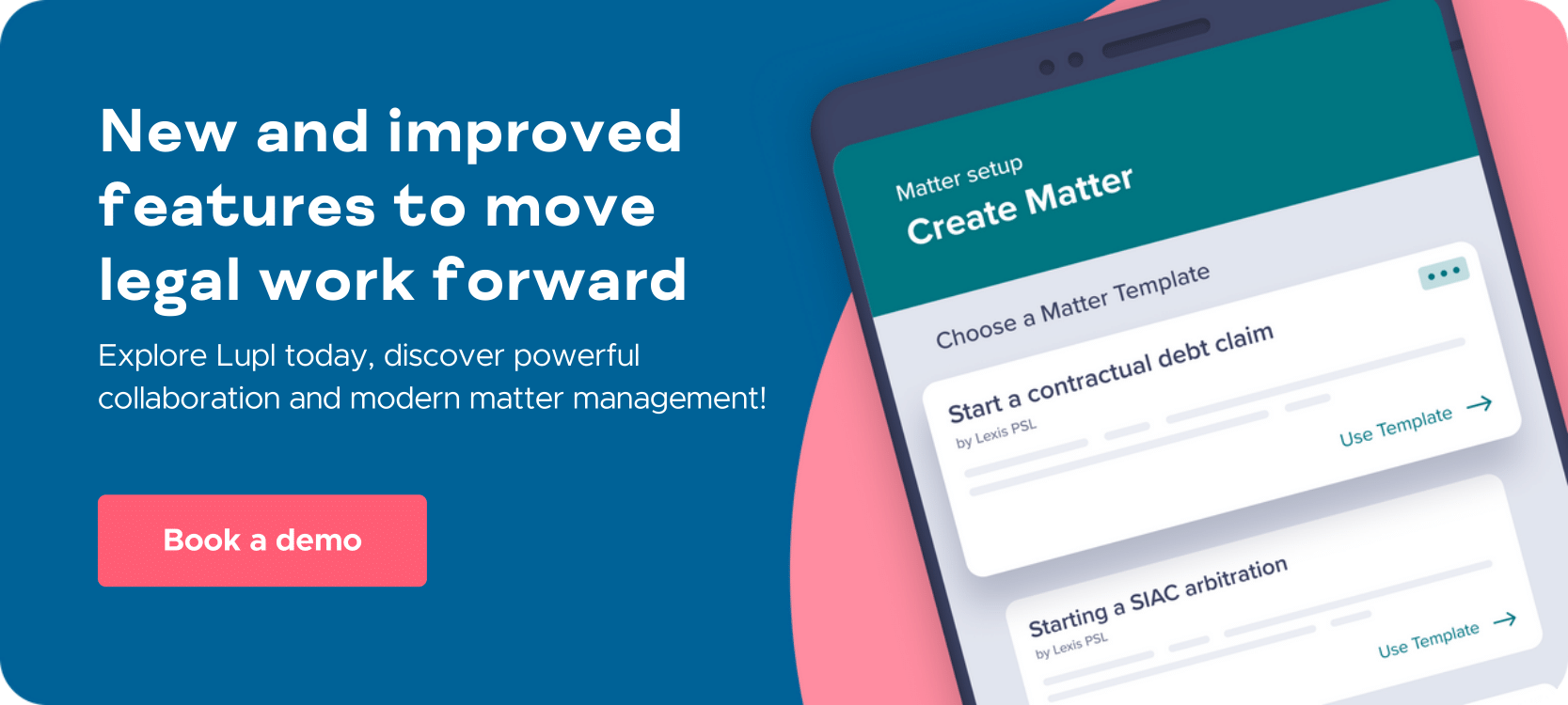Collaboration: When the least change is the best change

Here’s a foundational question for you – has the way the legal industry works really changed that much over the past two years? Sure, many of us have invested in some home office comforts. And a bunch of us learned that we don’t need to print as many documents as previously seemed a necessity. And some of us have been lucky enough to get some new schedule flexibility. But has the way we do the work of legal changed?
According to a recent report commissioned by ContractWorks titled “2022 In-House Legal Tech Report: How the Pandemic helped shape a Legal Tech revolution,” 65% of in-house legal teams want to work remotely at least part of the time, but more than 45% are already back in the office full-time. And an American Lawyer survey found roughly the same pattern within BigLaw – about 60% of respondents said their firms were asking for three days per week of in-office work. The last two years have proven that many roles can be effectively done while away from the office most of the time. So why the rush back to the office in legal? We’ve not found an effective way to develop and maintain culture through technology.
We’ve not historically been a collaborative industry.
Let’s not be too harsh on ourselves – legal has never been the most collaborative of industries. Lawyers check documents out from the document management system and write them alone. Lit support professionals build databases alone. Reviews are a one-human job. We read contracts alone. We research alone. At best, legal has traditionally been a Henry Ford assembly line where each person does their specialized part of the process to deliver the desired outcome. While this might seem a harsh statement of reality, it’s not meant to be. Every industry grows, evolves, and changes over time. The assembly line took us pretty far. But we only make it to the next level by working together… collaboratively.
Legal has never been the most collaborative of industries.
I know, I know. We rolled out Microsoft Teams during the pandemic. We all started texting our professional colleagues as much as our family and friends. And we foundationally changed our position on putting some data in the cloud. We even started hosting themed Zoom calls. But that’s not collaboration, that’s communication. Think of it this way, when you communicate, you transfer information from one to another. Collaboration, then, is more about when and where you work together – whether in the office, from home, or after hours.
It’s time for a different approach.
“If they try to get me back in the office [,] I will 100% leave.” According to the same American Lawyer survey on returning to the office, this was the prevailing mood as described by a BigLaw associate. And while it would be easy to lay the clear desire for remote work at the feet the younger generations, the fact is that parents, introverts, and many other groups have found remote work beneficial to their quality of life. Whether that means being able to pick up and drop the kids off at school or having the freedom to work in an environment that’s most conducive to your personal work style, offering the autonomy to be a human as well as an employee is already impacting satisfaction and retention within legal.
Effective collaboration will be central to re-imagining culture and mentorship in our new hybrid world. So why hasn’t adopting technology to support electronic forms of collaboration been more successful in legal? In many cases, this failure comes from a well-intentioned, but shortsighted approach to tech. Namely, we should be choosing tech that aligns to the way our professionals enjoy working today, and slowly guide them towards new ways of working.

Make the least change the best change.
We’ve all experienced an unusual amount of change over the past 2+ years, both personally and professionally, and we’re overwhelmed. How do we use tech to move legal from a culture of communication to one of collaboration? In short, keep your approach simple, measured, and engaged. Here are my tips for getting it right:
Decrease your tech stack.
I know, it’s blasphemy for any technologist to suggest less tech. But I’m 100% positive you own tech that no one (or virtually no one) is using. Why’s that matter? Think of your tech stack like hoteling in a colleague’s office for the day. If you can’t find the pens, have to call down to ask for some Red Welds (letter or legal size?!), and then wait for them to be dropped off, you’ve started your day off track. It’s hard to recover from that loss of focus. Your tech stack is no different.
“More [choice] requires increased time and effort and can lead to anxiety, regret, excessively high expectations, and self-blame if the choices don’t work out.”
Research tells us that offering customers (i.e., your professionals) a variety of tools to choose from may have the opposite of the intended effect. In his article “More Isn’t Always Better,” psychologist Barry Schwartz found that, “More [choice] requires increased time and effort and can lead to anxiety, regret, excessively high expectations, and self-blame if the choices don’t work out.” In an industry already known for high expectations, anxiety, and regret, our tech should not add to the problem. So, find an underused tool and get rid of it. Everyone will thank you for it.
Pro Tip: If you find that you really do need four project management tools, you can reduce the stress of choosing the right tech by creating a decision tree or wizard. For example, you might have three collaboration tools: one that can only be used internally, one that’s pay-per-use, and one that can be used internally or externally. Make it easy for your professionals to know that there is only one tool they can use to collaborate with external users without a cost.
Talk to your people – all of them, not just the ‘important’ ones.
We so frequently select technology with only the most senior or influential people in mind. The problem is that even if all your senior people adopt the new tech, process, or change, it will fail miserably if the other professionals can’t make it work. Worse yet, professionals who don’t feel represented in decision-making often actively challenge your efforts.
The key thing to keep in mind when seeking out opinions is that they must be diverse on all levels.
You’ll need to get input from all sorts of people – hourly staff, people of color, people in ‘satellite’ offices, people who love tech, AND people who hate tech.
Yes, you must talk to people who resist tech every chance they get. While you can’t satisfy everyone (nor should you try), understanding the benefits as well as the objections gets you closer to something that works within your four walls.
Pro tip: Assemble an informal advisory group. In one of my previous roles, I created a legal secretary and paralegal tech committee. This team weighed in on everything from defining the new tech we’d pursue (based on their pain points) as well as helped me understand how they work today.
Integrate your existing systems.
According to Ben Hengels, VP of Business Development and Partnerships at software provider Ligl.io, “Customers are asking for this. They want their existing software vendors to build partnerships and integrations, so they don’t have to go to the market.” Those sentiments were repeated again and again by legal operations professionals at this year’s CLOC Global Institute in Las Vegas.
You must be prepared to connect to other systems, processes, and partners. Bonus points if you can find a way to connect to an existing system (like your DMS) in its current state, without forcing your professionals to dramatically change all at once.
The benefits of integrating your existing systems are innumerable. For your professionals, you remove the obstacles and wasted time spent switching between different systems. In many cases, you’ll drive increased adoption amongst your existing tech by integrating systems. Imagine if you could improve your DMS usage by making it more accessible from within other firm systems! From a management perspective, integrated systems and tools increase productivity and often reduce overhead.
Pro tip: Integrating systems will become more prevalent as our collective expertise with APIs and similar technologies improve. An API, or application programming interface, allows you to pass data and information between applications, allowing you to use your time and matter data to influence decision-making in other systems or applications. Consider investigating whether you might have or need some expertise with APIs, robotic process automation, and other technologies which support integration.
Meet people where they are today.
Legal professionals aren’t hostile to change, despite what our perceptions might tell us – they’re risk averse. Our industry isn’t particularly supportive of failures, whether perceived or real, so legal professionals want to be sure that accepting the change you propose won’t negatively impact their work or reputations. The best way to do that? Meet them where they are.
Thinking specifically about your collaboration strategy, do you know what is working today? Look to small pockets of people, teams, or practices that feels very connected to one another regardless of what geography they live or work from. Find out why what they’re doing is working well – maybe it’s because they share a common love for the Peloton bike and have formed a team. I’m not suggesting that your approach should be to buy Pelotons for everyone, but instead look at what has connected them as humans. A common passion or interest. Perhaps the best way to get people collaborating is by starting with building easy ways for affinity groups – groups who organize around a shared interest or value – to form and stay connected. There’s no ‘right’ approach – only the one that best suits your teams and your organization.
Pro tip: Make it easy for your people to work on their mobile devices – if they choose to. I’m not talking about forcing people to be ever available to you via their phones. Instead, think about making it possible to make simple edits in a document from your device. I’ve heard of so many special events ruined because a lawyer had to go home and log in to VPN to change three words under deadline. There are ways to securely enable this type of work today, and it’s worth the investment.
Use what you already own.
Throughout my legal career, I’ve received many requests to buy new products and services that my firm already owned but had been disabled or hobbled without anyone’s knowledge. For instance, if you’re still working on your section of a brief and then handing it off to the next person to add their section, you’re about a decade behind.
The Microsoft and Google products we all use every day have offered document co-authoring for years, but legal continues to resist this proven collaborative technology believing it to be too risky for their professionals.
Pro tip: It’s also a great idea to conduct regular reviews with your vendors and services providers. None of us is ever truly up to date on the latest features and functionality, so an annual review to ensure you’re leveraging the full breadth of collaborative features offered through the products and services you already subscribe to (and pay for!) may give you new collaborative tech without any new spending.
Some people are glue.
They somehow always know someone in the department you need to work with or have a former colleague in the office where you need to hire. You’ll find these key people dispersed across the social universe – extroverts and introverts alike. Encourage these people to use their skills with your organization and weigh their opinions a bit more heavily when you’re selecting or implementing new tech. Not because they’re better or smarter, but because they will bring their network to your tech. And they amplify the voices and efforts of those around them. But don’t be fooled.
According to Harvard Business Review, as much as a third of the most valuable collaboration in an organization comes from only 3% to 5% of employees. That means 97% of your people aren’t glue.
Pro tip: Don’t assume you know who the glue is. According to Harvard Business Review, only about 50% of your top performers are your best collaborators. Talk to your people about who they ‘talk’ to and the top collaborators will start to emerge.
Don’t forget the other side of the network.
Remember that collaboration extends beyond the bounds of your firm, team, or organization. Look for tools, system, and processes that enable your professionals to work across traditional barriers. In-house teams and legal operations professionals need to have a means of collaborating with their business units. Lawyers need to be able to collaborate with the firm’s clients.
As the world moves forward, the most successful businesses will be those that finds ways of positioning themselves close to their internal and external clients.
Pro tip: The best solutions here will not require either side of the network to drastically change the way they work. Instead, each group will be able to work as they prefer, while also enabling the other side to do the same. There are a growing number of software and service providers specifically focused on legal collaboration.
Collaboration always works best when it’s not forced.
Let’s not impose a “collaboration mandate” – instead, let’s make it easy to do. Let’s recognize it for the value it creates. And let’s enjoy it when it comes easy. In the end, the tech is here only to enable what we chose to do with it.

Resources
“More Isn’t Always Better” HBR
About The Author
Cheryl Wilson Griffin, MBA (MIS), PMP is the COO at Lupl, a legal tech platform designed to bring together clients and their lawyers while allowing everyone to continue to work in and with the platforms they know and love. Cheryl has fostered broad relationships within the global legal industry and is a regular speaker and panelist on issues of knowledge management, project management, emerging technologies, ESG, and leadership. She’s passionate about equality and human rights, the Chicago Cubs, and dachshunds.
More legal tech insights we think you'll love

Q2 2024 Product Update – New Features & Improvement
Lupl is the leading task and project management solution for...

How a team of trainee lawyers streamlined work handovers with Lupl
CMS trainees adopt Lupl's task management tools to enhance work...

